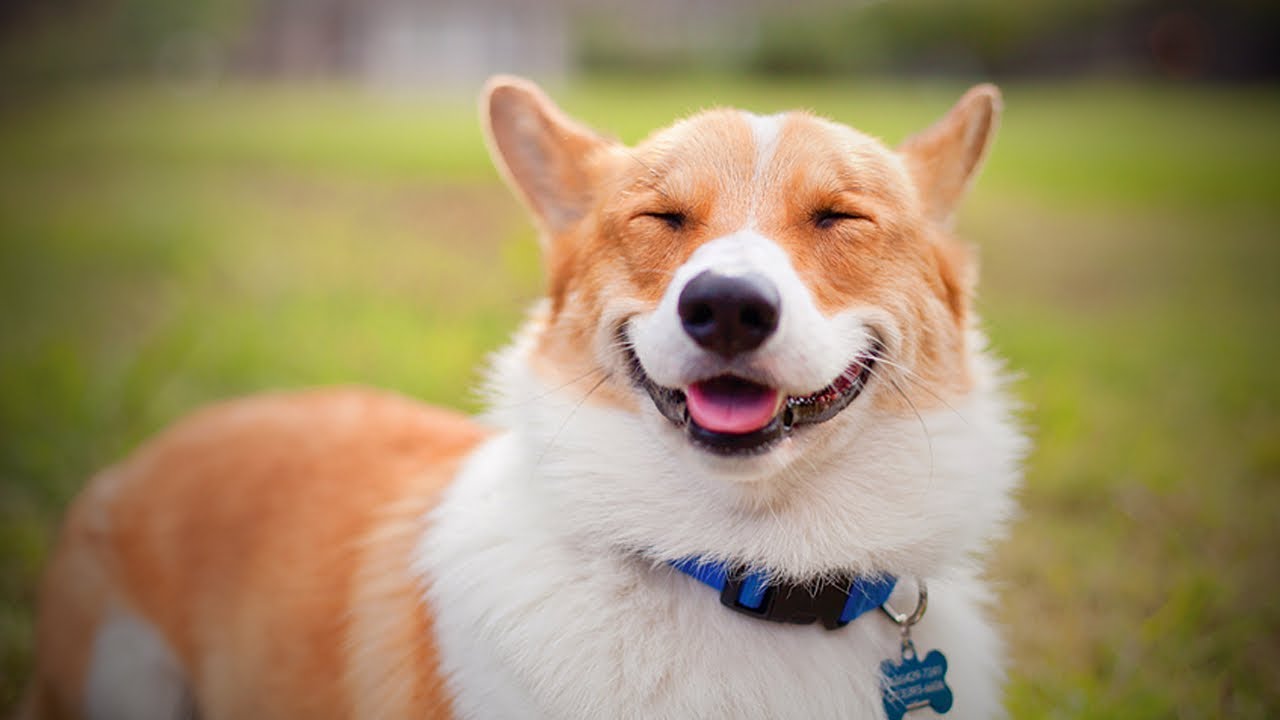What is the Best Way to Teach Your Dog to Smile?


Teaching a dog to grin on command might be more challenging than teaching other tasks such as “sit” and “stay.” This is because dogs appear to grin for a variety of instinctual reasons that may or may not be motivated by happiness.
Before you can teach your dog to grin, it’s important to understand why your dog occasionally smiles. The following are some of the reasons, as well as instructions on how to teach your dog to grin on demand and a few helpful hints.
What Is the Significance of Your Dog’s Smile?
Aggression
Dogs growl aggressively by curling their lips back and exposing their fangs. This may occur when a stranger or another dog approaches your dog. While it may appear to be a grin due to the natural upward curving of dogs’ lips, the accompanying growl or snap indicates aggressiveness.
Additionally, your dog’s ears will be alert, his tail will be up, his body will be stiff, and he will appear to be ready to rush forward. This is most emphatically not a happy show, nor is it the way you want to educate your dog to grin.
Fear
Rather than growling, some dogs may respond to a stranger or another dog with a surrender grin. This demonstrates that they are uneasy and fearful and wish to be left alone. The subservient grin is frequently accompanied with pinned-back ears, seated posture, and tucked tail between the legs.
Rather of approaching the source of their unhappiness, such as the hostile snarl, your dog’s body language will indicate that he wishes to flee. This is a peaceful gesture, as your dog is demonstrating to whoever he is smiling that he is not a threat and wishes to be left alone, but it is also a warning to back off, since this might evolve into violence.
Excitement
Not all of the reasons dogs appear to grin are negative. Dogs also pant with their jaws slightly open when they are happy or excited, such as during playtime or when they are going to get a treat.
This link with smiling may make teaching your dog the grin command easier. Typically, when your dog smiles, his tail will wag and he may leap up and down.
Simply because dogs appear to grin for a variety of reasons does not indicate that teaching your dog to smile on command is difficult or impossible.
This simply implies that he has an innate association between what we consider to be smiling and violence or fear, as well as enjoyment. You just need to ensure that you time your training right so that your dog understands what you want him to learn.
When done correctly, teaching your puppy new instructions can be a pleasurable bonding experience for both you and your dog.
How to Train Your Dog to Smile
1. Step One
Wait until your dog is in a joyful, peaceful, and relaxed condition, such as after playing or snuggling, to teach him to smile. Then, while saying “Grin!” in a cheerful tone (your tone is critical because you do not want your dog to believe he is being punished), gently pull the back of his lips upward in the shape of a smile with your fingers. This is how your dog will begin to correlate the order with his mouth movement.
2. Step Two
With one hand, hold a reward and the other, lift your dog’s lips and say the instruction “Smile!” in a pleasant voice. Then provide the reward to your dog, scratch his favorite place, and praise him. This should be repeated multiple times.
3. Step Three
Take your dog on an enjoyable or relaxing activity, such as a walk, playfulness, or snuggling. Then, in the same joyful tone, order your dog to grin and give him a treat. You may need to use your fingers to coax him back into smiling, but he should quickly learn to do it on his own and link the action with the smile command and a treat. This time interval between training sessions will keep him pleased and will aid him in recalling the command later on when you are not training.
Important Reminders
1. Avoid teaching your dog to grin if he is a biter. He must first be taught not to bite. Much of the time spent training your dog to perform this trick involves you putting your hands around his mouth, and you may be bitten if you have an aggressive dog. Additionally, avoid teaching any dog this skill when he is eating, even if he is not aggressive, as he may bite you unintentionally.
2. You’re usually better off initially teaching your dog basic instructions such as “sit” and “turn over.” After he has learned these more fundamental commands, you may teach him how to grin.
3. Train in bursts rather than for extended amounts of time. If your dog does not grasp the command, step away for a moment and then return. Training at short intervals is the most effective method of preventing your dog from becoming confused.
4. Do not reprimand your dog if he does not understand the instruction immediately. This is counterproductive, since it will cause him to link training with punishment, making him fearful of learning not just the grin command, but also other instructions.
5. You should reward your dog frequently as you teach him a new command. Utilize little training goodies. You don’t want to be rewarding your dog throughout training with gigantic rawhides or even the normal-sized goodies you may give him as a bribe or reward sometimes. There are treats that state on the label that they are suited for training and are extremely tiny (usually about the size of one piece of dry dog food, or just smaller than a dime).




















